Inhibition and potentiation of the exercise pressor reflex by pharmacological modulation of TRPC6 in male rats
- PMID: 38340081
- PMCID: PMC11315811
- DOI: 10.1113/JP286118
Inhibition and potentiation of the exercise pressor reflex by pharmacological modulation of TRPC6 in male rats
Abstract
We determined the role played by the transient receptor potential canonical 6 (TRPC6) channel in evoking the mechanical component of the exercise pressor reflex in male decerebrated Sprague-Dawley rats. TRPC6 channels were identified by quadruple-labelled (DiI, TRPC6, neurofilament-200 and peripherin) immunohistochemistry in dorsal root ganglion (DRG) cells innervating the triceps surae muscles (n = 12). The exercise pressor reflex was evoked by statically contracting the triceps surae muscles before and after injection of the TRPC6 antagonist BI-749327 (n = 11; 12 μg kg-1 ) or SAR7334 (n = 11; 7 μg kg-1 ) or the TRPC6 positive modulator C20 (n = 11; 18 μg kg-1 ). Similar experiments were conducted while the muscles were passively stretched (n = 8-12), a manoeuvre that isolated the mechanical component of the reflex. Blood pressure, tension, renal sympathetic nerve activity (RSNA) and blood flow were recorded. Of the DRG cells innervating the triceps surae muscles, 85% stained positive for the TRPC6 antigen, and 45% of those cells co-expressed neurofilament-200. Both TRPC6 antagonists decreased the reflex pressor responses to static contraction (-32 to -42%; P < 0.05) and to passive stretch (-35 to -52%; P < 0.05), whereas C20 increased these responses (55-65%; P < 0.05). In addition, BI-749327 decreased the peak and integrated RSNA responses to both static contraction (-39 to -43%; P < 0.05) and passive stretch (-56 to -62%; P < 0.05), whereas C20 increased the RSNA to passive stretch only. The onset latency of the decrease or increase in RSNA occurred within 2 s of the onset of the manoeuvres (P < 0.05). Collectively, our results show that TRPC6 plays a key role in evoking the mechanical component of the exercise pressor reflex. KEY POINTS: The exercise pressor reflex plays a key role in the sympathetic and haemodynamic responses to exercise. This reflex is composed of two components, namely the mechanoreflex and the metaboreflex. The receptors responsible for evoking the mechanoreflex are poorly documented. A good candidate for this function is the transient receptor potential canonical 6 (TRPC6) channel, which is activated by mechanical stimuli and expressed in dorsal root ganglia of rats. Using two TRPC6 antagonists and one positive modulator, we investigated the role played by TRPC6 in evoking the mechanoreflex in decerebrated rats. Blocking TRPC6 decreased the renal sympathetic and the pressor responses to both contraction and stretch, the latter being a manoeuvre that isolates the mechanoreflex. In contrast, the positive modulator increased the pressor reflex to contraction and stretch, in addition to the sympathetic response to stretch. Our results provide strong support for a role played by the TRPC6 channel in evoking the mechanoreflex.
Keywords: exercise pressor reflex; immunohistochemistry; mechanoreflex; neural control of autonomic circulation; sympathetic nervous system; transient receptor potential canonical 6.
© 2024 The Authors. The Journal of Physiology published by John Wiley & Sons Ltd on behalf of The Physiological Society.
Conflict of interest statement
Competin interests
The authors declare no conflict of interests.
Figures
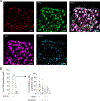


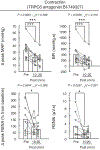


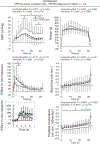
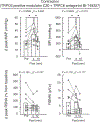

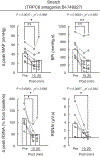

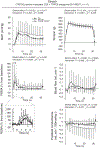
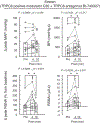
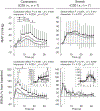

Similar articles
-
GsMTx-4 inhibits the exercise pressor reflex and the muscle mechanoreflex primarily through TRPC inhibition.J Physiol. 2025 Aug 28. doi: 10.1113/JP289092. Online ahead of print. J Physiol. 2025. PMID: 40876864
-
Novel role for purinergic 2× subtype 4 (P2X4) receptors in the exercise pressor reflex and mechanoreflex: Effect of heart failure.Auton Neurosci. 2025 Aug;260:103277. doi: 10.1016/j.autneu.2025.103277. Epub 2025 Apr 5. Auton Neurosci. 2025. PMID: 40233602
-
Intracerebroventricular insulin injection acutely normalizes the augmented exercise pressor reflex in male rats with type 2 diabetes mellitus.J Physiol. 2024 Aug 21:10.1113/JP286715. doi: 10.1113/JP286715. Online ahead of print. J Physiol. 2024. PMID: 39165238 Free PMC article.
-
NTP Developmental and Reproductive Toxicity Technical Report on the Prenatal Development Studies of 2-((1-(4-Phenoxyphenoxy)propan-2-yl)oxy)pyridine (CASRN 95737-68-1) in Sprague Dawley (Hsd:Sprague Dawley® SD®) Rats and New Zealand White (Hra:NZW SPF) Rabbits: DART Report 07 [Internet].Research Triangle Park (NC): National Toxicology Program; 2022 Jan. Research Triangle Park (NC): National Toxicology Program; 2022 Jan. PMID: 35593777 Free Books & Documents. Review.
-
The Black Book of Psychotropic Dosing and Monitoring.Psychopharmacol Bull. 2024 Jul 8;54(3):8-59. Psychopharmacol Bull. 2024. PMID: 38993656 Free PMC article. Review.
Cited by
-
Abnormal cardiovascular control during exercise: Role of insulin resistance in the brain.Auton Neurosci. 2025 Apr;258:103239. doi: 10.1016/j.autneu.2025.103239. Epub 2025 Jan 19. Auton Neurosci. 2025. PMID: 39874739 Free PMC article. Review.
References
-
- al-Ani M, Robins K, al-Khalidi AH, Vaile J, Townend J & Coote JH (1997). Isometric contraction of arm flexor muscles as a method of evaluating cardiac vagal tone in man. Clin Sci 92, 175–180. - PubMed
-
- Amaya F, Decosterd I, Samad TA, Plumpton C, Tate S, Mannion RJ, Costigan M & Woolf CJ (2000). Diversity of expression of the sensory neuron-specific TTX-resistant voltage-gated sodium ion channels SNS and SNS2. Mol Cell Neurosci 15, 331–342. - PubMed
Grants and funding
LinkOut - more resources
Full Text Sources

